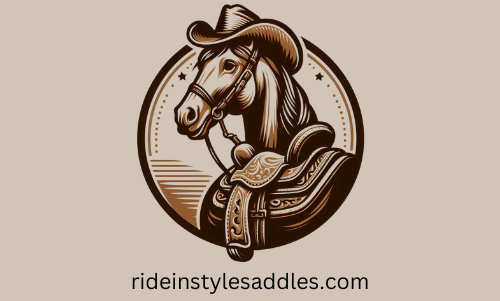Can an Old or Cheap Saddle Hurt My Horse?
Short answer: Absolutely, yes. Saddles that are poorly made, overly worn, or incorrectly fitted can cause discomfort, muscle strain, and even long-term spinal damage. Let’s break down why fit matters, what to watch for, and how to choose the right tack to keep your horse happy and healthy.
Many riders underestimate the importance of saddle quality, often opting for less expensive options to save on costs. However, investing in good tack not only benefits the horse but also enhances the rider’s experience. A well-fitted saddle allows for better communication between the rider and the horse, improving performance in various disciplines such as dressage, jumping, and trail riding.
Why Fit Is So Important
For instance, a saddle that doesn’t fit can hinder your horse’s ability to move freely, which is crucial during events or work. Consider a horse competing in dressage; any discomfort caused by a poor fit could lead to subpar performance and frustration for both horse and rider. Thus, ensuring proper fit is paramount for achieving goals in equestrian sports.
The saddle acts as the interface between you and your horse. If it doesn’t sit correctly or distribute pressure evenly, your horse will feel imbalanced. Over time, this can lead to:
- Back soreness
- Swelling or bruising under the saddle
- Hollowing of the back or refusing to move forward
- Bucking, rearing, or other behavioral issues
- Permanent muscular or nerve damage
No matter how gentle your hands or legs are, an uncomfortable fit can undo all your good riding.
The Truth About Cheap Tack
Lower-cost saddles may save money in the short term, but they often come with hidden risks:
- Inferior materials that wear quickly or can’t mold to your horse’s back
- Inflexible trees that cause pressure points
- Stitching that frays or breaks
- Poorly placed panels that dig into the withers or loins
Cheap doesn’t always mean unsafe—but it almost always means you’ll need to invest in repairs or a replacement sooner rather than later.
Are Older Options Just As Bad?
Not necessarily. A high-quality used saddle can still be a great option, if it has been well cared for and correctly fitted. But years of use can break down even the best saddle:
- Compressed or lumpy flocking
- Twisted trees or loose rivets
- Dried-out leather that becomes brittle
- Uneven wear causing imbalance
Pro Tip: Always have a secondhand saddle checked by a qualified saddle fitter before use.
Signs Your Tack May Be Causing Harm
Keep an eye out for these red flags:
- Uneven sweat marks after riding
- Sore spots, muscle atrophy, or heat sensitivity along the back
- White hairs under the saddle area (a sign of long-term pressure)
- A “cold-backed” reaction when tacking up
- Behavioral changes under saddle
How to Choose the Right Fit
Whether you’re shopping new or used, here’s what to prioritize:
- A tree that fits your horse’s withers, spine, and back length
- Quality leather or synthetic materials that are durable and breathable
- Even panel contact from front to back—no “bridging” gaps
- A gullet wide enough to clear the spine completely
- The help of a professional saddle fitter to make sure it all checks out
Quick Tip:
Investing in quality tack doesn’t stop at just the saddle. Consider also the importance of a well-fitted bridle and appropriate girth. These elements work together with the saddle to ensure your horse is comfortable and responsive. Poor-quality tack can lead to similar issues as an ill-fitted saddle and may compromise your riding experience. Make sure to choose reputable brands and consult with professionals when needed.
👉 Explore our range of saddle pads and accessories here for english saddles and here for western saddles, protect your investment—and your horse’s back.
When evaluating older saddles, it’s essential to assess their overall condition. A well-maintained saddle can provide years of reliable service, while a neglected one could lead to unnecessary harm. For instance, a saddle with dried-out leather can easily crack, potentially causing injury to the horse. Always check for flexibility in the leather and ensure that it has been regularly conditioned.
Additionally, monitoring your horse’s behavior after riding is crucial. If your horse starts refusing to move forward or shows signs of discomfort when saddling, it could be a direct result of saddle issues. Regularly evaluating their performance and comfort levels can help catch potential problems early, allowing for timely adjustments.
In Summary
Yes, an old or cheap saddle can hurt your horse. But with the right care, guidance, and attention to fit, you can avoid the pitfalls and ride with confidence. When in doubt—consult a saddle fitter and put your horse’s comfort first. After all, a happy horse is a willing partner.
Got questions about saddle fit or accessories?
Drop a comment below or reach out to us! We’re here to help you and your horse ride in style, and ride in comfort.
Moreover, the type of riding you do can dictate the type of saddle you need. For example, a jumping saddle typically has a flatter seat to allow for better movement in the air, while a dressage saddle has a deeper seat to help the rider maintain a better position. Understanding the specific requirements of your riding style will aid you in selecting the most appropriate saddle.
Lastly, as you navigate the world of saddles, remember that many experienced riders and trainers are valuable resources. Engaging with them can provide insights that may not be readily available online or in stores. They can share personal experiences, recommend trusted brands, and help identify what types of saddles have worked well for them. Networking within the equestrian community can lead to better-informed decisions.

